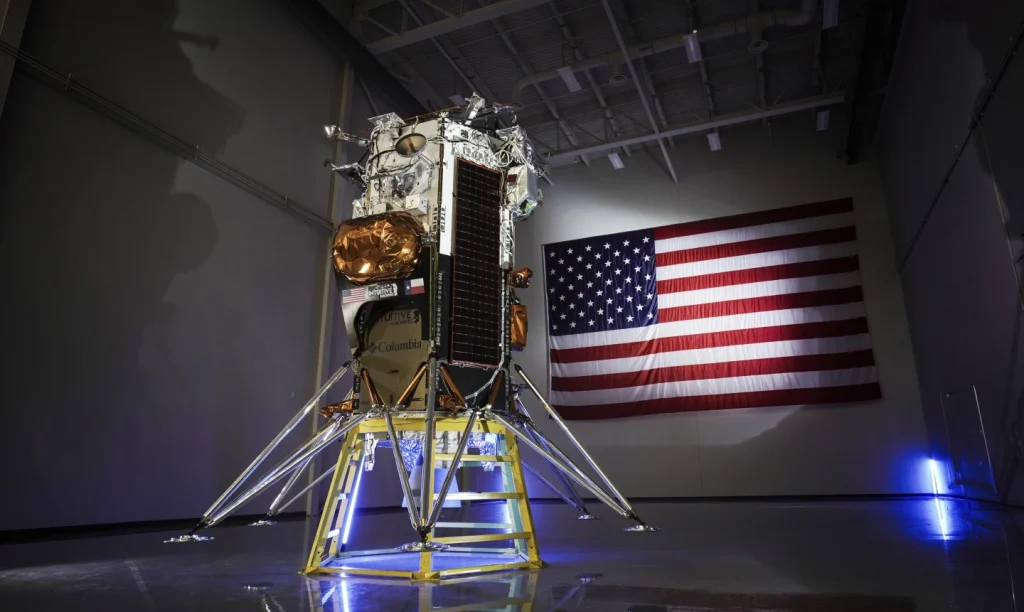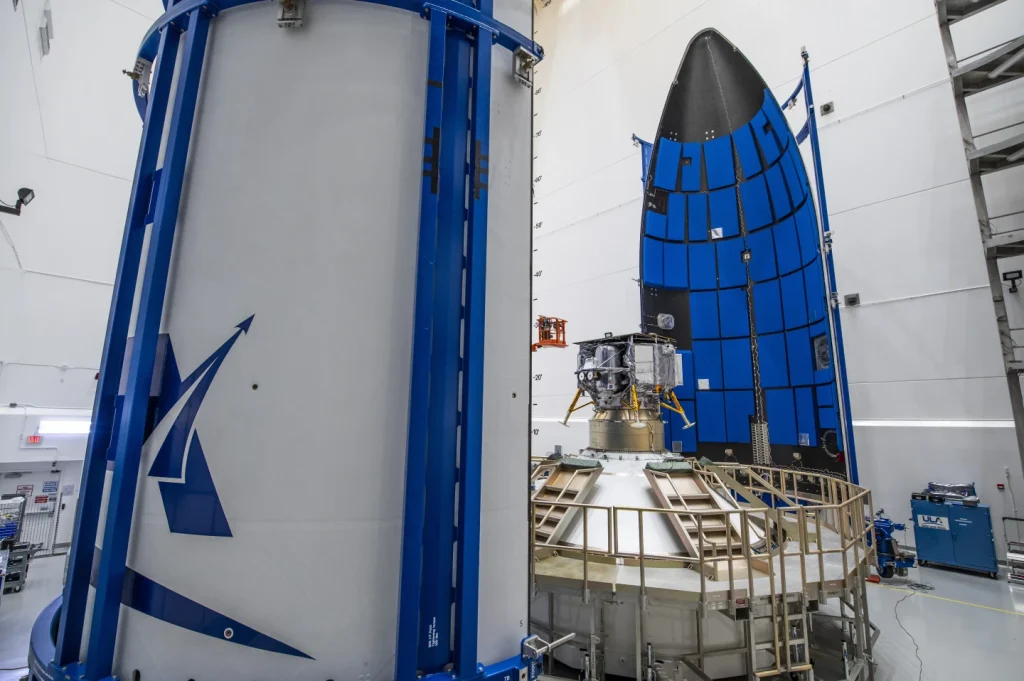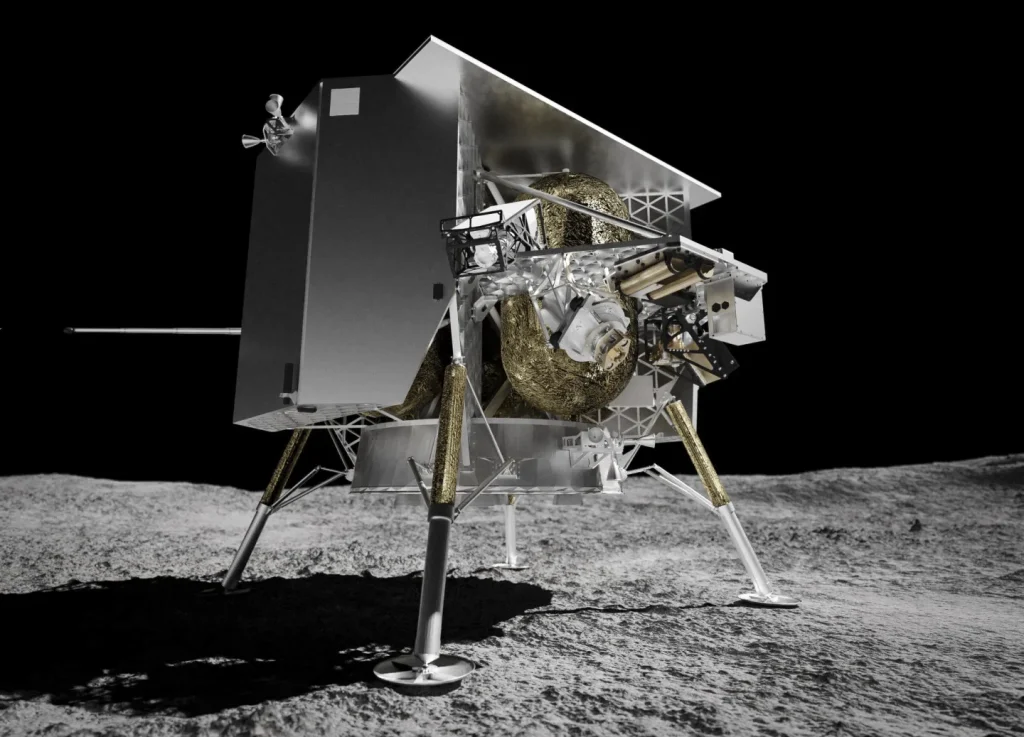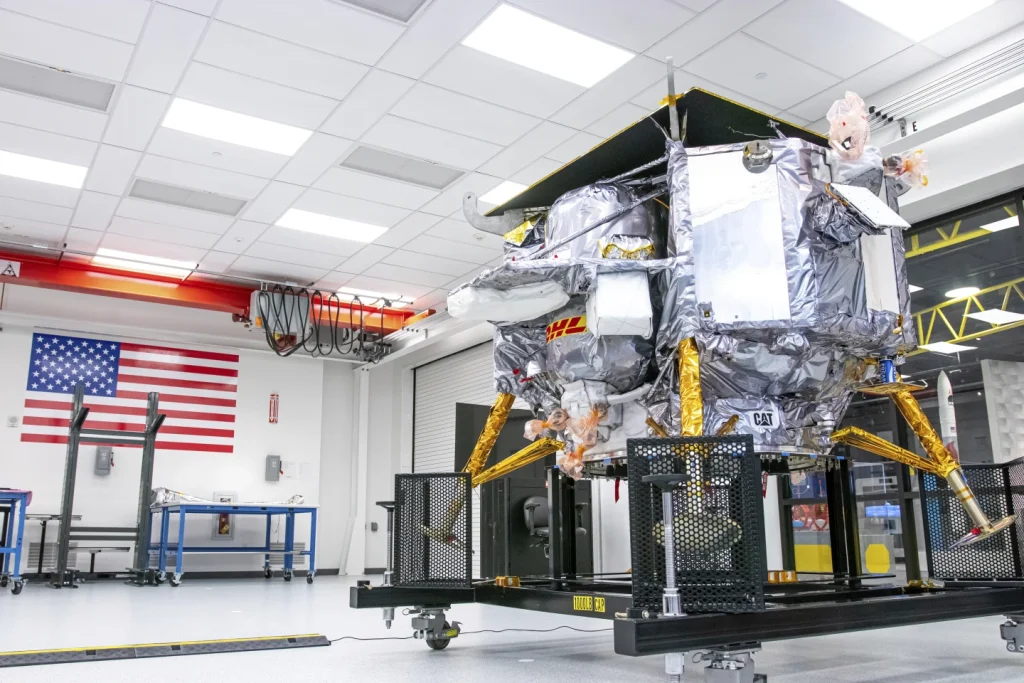In recent years, the global space exploration landscape has witnessed a resurgence of interest in lunar missions.
The achievements of China and India in successfully landing on the moon, coupled with the setbacks experienced by Russia, Japan, and Israel, have spurred a renewed focus on lunar exploration.
Now, with the Apollo program a distant memory, two private companies are aggressively working to reestablish the United States’ presence on the lunar surface.
This endeavor is being supported by NASA, as the agency seeks to revitalize commercial moon deliveries and refocus its efforts on returning astronauts to the moon.
The emergence of these private enterprises marks a significant step in the evolution of space exploration, with implications that extend far beyond the confines of our planet.
Pittsburgh’s Astrobotic Technology and Houston’s Intuitive Machines are at the forefront of the race to restore the U.S.’s prominence in lunar exploration.
Astrobotic Technology is poised to launch a lander aboard United Launch Alliance’s Vulcan, marking a pivotal moment in the company’s trajectory.
Similarly, Intuitive Machines is gearing up to send its own lander into space, with plans to hitch a ride on a SpaceX flight in the near future.
These ambitious initiatives represent a crucial shift in the dynamics of lunar exploration, as private entities take center stage in the pursuit of space exploration.
The Japanese Space Agency’s impending lunar landing mission further underscores the intensifying competition in this domain.
With a scheduled attempt just weeks away, Japan aims to join the exclusive club of nations that have achieved successful lunar landings.
This pursuit serves as a testament to the global interest in lunar exploration, with countries vying to make their mark on the lunar surface.
The significance of these endeavors cannot be overstated, as they signal a paradigm shift in the traditional dominance of governmental space agencies.
The history of lunar landings is fraught with challenges, as the complexities of navigating the lunar environment present formidable obstacles.
Landing on the moon demands precision and ingenuity, as the absence of a substantial atmosphere necessitates alternative methods for descent and landing.
The reliance on thrusters to facilitate a safe landing, amidst the treacherous terrain of cliffs and craters, underscores the technical prowess required for such missions.
The successful execution of lunar landings represents a testament to human innovation and the relentless pursuit of scientific exploration.
The achievements of past lunar missions, notably those of the United States, Russia, China, and India, serve as a testament to the indomitable spirit of exploration that drives humanity’s quest for knowledge.
The historical significance of these missions cannot be overstated, as they have paved the way for the current wave of lunar exploration initiatives.
The prospect of returning astronauts to the moon, a feat achieved only by the United States thus far, looms large on the horizon, signifying the next chapter in humanity’s cosmic odyssey.
The resurgence of lunar exploration, driven by a diverse array of international actors and private enterprises, holds profound implications for the future of space exploration.
The convergence of governmental agencies and private companies in the pursuit of lunar missions marks a pivotal moment in the democratization of space exploration.
The potential for collaboration and innovation in this domain is immense, with the prospect of establishing sustainable human presence on the moon becoming increasingly tangible.
Furthermore, the commercialization of lunar deliveries and the involvement of private companies signify a transformative shift in the economics of space exploration.
The burgeoning space industry is poised to unlock new opportunities for scientific research, resource utilization, and technological innovation.
The lunar surface, once a distant frontier, is now emerging as a potential hub for human activity and scientific discovery, with implications that extend to the realms of astronomy, planetary science, and beyond.
The current wave of lunar exploration, propelled by the endeavors of private companies and international space agencies, heralds a new era in the history of space exploration.
The convergence of technological advancements, entrepreneurial spirit, and global collaboration has set the stage for a renaissance in lunar missions.

The prospect of returning astronauts to the moon, alongside the commercialization of lunar deliveries, holds immense promise for the future of humanity’s cosmic endeavors.
As we stand on the cusp of a new space age, the moon beckons as a testament to the indomitable spirit of exploration and the boundless potential of human ingenuity.
The recent flurry of lunar missions has reignited global interest in space exploration, with a particular focus on the moon.
The failed attempts by various nations and organizations to land on the moon have paved the way for a new competition, this time involving private companies.
The stage is set for a showdown between Astrobotic and Intuitive Machines as they vie to become the first private entity to achieve a controlled landing on the moon.
The significance of these upcoming missions cannot be overstated. Not since the Apollo 17 mission in 1972 has the United States attempted a moon landing.
The subsequent focus on Mars exploration and the waning interest in lunar missions have left the moon relatively unexplored for decades.
However, the emergence of private entities in the space race has injected new energy and excitement into lunar exploration.
Astrobotic and Intuitive Machines, recipients of substantial funding from a NASA program, have been gearing up for their respective missions.
Astrobotic’s Peregrine lander, named after the fastest bird, is set to carry 20 research packages to the moon for seven countries, including NASA.
On the other hand, Intuitive Machines’ Nova-C lander will carry five experiments for NASA to the moon’s south polar region.
The competition between the two companies is not merely about technical prowess and scientific achievements; it also reflects the shifting dynamics of geopolitics in space exploration.
As Steve Altemus, the CEO of Intuitive Machines, aptly pointed out, the space race is no longer just about scientific exploration but also about geopolitical influence and global positioning.
The implications of being the first private entity to land on the moon extend far beyond the realm of space exploration, resonating with broader political and strategic interests.
The strategic significance of lunar exploration is underscored by the involvement of various countries and organizations.
The moon has become a focal point for international collaboration and competition, with nations such as India, Japan, and Israel making their mark through their lunar missions.
The renewed interest in the moon is indicative of a broader trend in which space exploration is increasingly becoming a multi-national endeavor, with both public and private entities playing pivotal roles.
The success of these upcoming missions will not only mark a significant milestone in space exploration but also pave the way for future endeavors.
The data and insights gleaned from these missions will undoubtedly contribute to our understanding of the moon and its potential as a platform for scientific research and exploration.
Moreover, the technological advancements and innovations resulting from these missions will have far-reaching implications for the broader aerospace industry.
As we witness the culmination of years of preparation and anticipation, the excitement surrounding these lunar missions is palpable.
The prospect of witnessing the first private entity to achieve a controlled landing on the moon is not only a testament to human ingenuity and determination but also a harbinger of a new era in space exploration.
The competition between Astrobotic and Intuitive Machines serves as a microcosm of the broader race for dominance in space, reflecting the convergence of scientific, geopolitical, and technological interests.
In conclusion, the impending lunar missions by Astrobotic and Intuitive Machines represent a pivotal moment in the history of space exploration.
The convergence of public and private interests, the geopolitical implications, and the scientific significance of these missions underscore the multifaceted nature of the new space race.
As we eagerly await the outcome of these missions, we are reminded of the enduring human spirit of exploration and the boundless potential of space as a frontier for discovery and innovation.
In this new chapter of lunar exploration, the world watches with bated breath as private entities take center stage in the quest for lunar domination.
The legacy of Apollo 17’s Gene Cernan and Harrison Schmitt’s moonwalk may soon be eclipsed by a new era of lunar exploration, led by the pioneering efforts of private companies. The race is on, and the stakes are higher than ever before.
The exploration of the moon has long been a dream of scientists and space enthusiasts alike. With the recent discovery of frozen water in the south pole’s permanently shadowed craters, this dream is closer to becoming a reality.
Scientists believe that these craters hold billions of pounds of frozen water, which could be used for drinking and making rocket fuel. This discovery has sparked a new wave of excitement and anticipation for the future of space exploration.

NASA’s Artemis program, named after Apollo’s twin sister in Greek mythology, is set to send the first moonwalkers to the south pole.
The program aims to land on the moon by 2025, although the General Accountability Office suspects that it may be closer to 2027. Nevertheless, the mission is set to be a historic moment in space exploration.
Two companies, Astrobotic and Intuitive Machines, are also planning missions to the moon’s south pole. Astrobotic will carry NASA’s water-seeking Viper rover on its second flight, while Intuitive Machines will deliver an ice drill for NASA.
These missions are crucial in furthering our understanding of the moon’s resources and potential for future human exploration.
Landing near the moon’s south pole is no easy feat. The terrain is rocky, craggy, and full of craters, making it difficult to find a suitable landing spot.
The precision required to safely touch down in this challenging environment is a testament to the skill and expertise of the teams involved in these missions.
Pittsburgh, a newcomer in the space exploration scene, is making its mark on the lunar missions. Astrobotic’s lander will carry a token from the Kennywood amusement park, as well as other items to commemorate the Steel City.
Additionally, the lander will carry the ashes or DNA from 70 individuals, including “Star Trek” creator Gene Roddenberry and science fiction writer Arthur C.
Clarke. It will also carry strands of hair from three U.S. presidents: George Washington, Dwight D. Eisenhower, and John F. Kennedy.
These symbolic items serve as a reminder of the diverse and rich history of human achievement and exploration.
The upcoming lunar missions represent a significant milestone in the history of space exploration. The discoveries and advancements made during these missions will pave the way for future endeavors in space.

The potential for utilizing the moon’s resources, such as frozen water, opens up new possibilities for sustained human presence in space.
As we look towards the future, the exploration of the moon’s south pole holds great promise for the advancement of science and technology.
